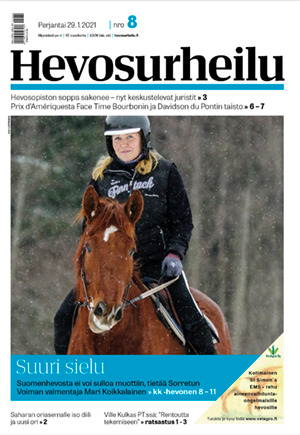
The Hevosurheilu magazine is important to people for whom horses are a passionate way of life. Besides their normal editorial work, the magazine’s editorial staff are interested in writing extensive historical articles about the horse industry. These articles have garnered a lot of praise from readers. The popularity of these peeks into the past gave rise to the idea that the past issues could be digitised. Hevosurheilu’s editorial staff have had the opportunity to familiarise themselves with the digitisation project of the Karjalainen newspaper, which, for its part, strengthened and concretised the staff’s understanding of the task. The decision to digitise is considered to be a significant cultural act in the sector.
The archive will serve both readers and editors
Hevosurheilu is working on the business model related to the digitisation. “We still have to consider whether we will give our regular subscribers access to the archive at a discount or in relation to their subscription,” Kinnula says. This matter is also linked to the overall digital reform currently being carried out in the magazine.
Kinnula reckons that people will be more likely to subscribe to the magazine once a part of the archive is placed behind a paywall. The magazine’s print run is currently 17,500 copies, of which more than 90% are sent out to the subscribers.
For now, it is difficult to predict how many readers will start using the archive. However, Kinnula trusts that the interest is out there. “If local newspapers have managed to get readers for their archives with local news, I believe that we have even more to give to our own readers.”
The search term function plays a key role in the use of the archive. “The industry values distinguished horses and experienced persons who work with them,” says Kinnula. “What could be more fun than looking up articles about your own horse with a name search!” According to Kinnula, the archive and its search function will also facilitate the work of the magazine’s journalists, as they can use the materials to write better articles. Background information is easier to find in a digital archive than by looking for it manually in bound yearbooks.
The magazine’s entire history in a digital archive
The reading application is currently being tested with materials that have already been digitised. The project will start with the most recent issues, and the older issues will be delivered to the National Library of Finland for digitising as the work progresses. “Fortunately, the National Library has already digitised our early issues from the first few years, as I don’t think we have the yearbooks for every year anymore,” Kinnula says. Now, the entire history of the magazine can be digitised, starting from 1924. The digitisation is estimated to be completed next autumn. The aim is for the entire archive to be opened to readers this year.
Digitisation requires a licence from the authors
The Hevosurheilu magazine has acquired the copyright licences required to digitise its issue archive from Kopiosto. The licence includes the copyrights of Finnish journalists and photographers, photo agencies, foreign writers, authors, graphic designers and comic artists, among others.
Through Kopiosto, the authors can get the remunerations owed to them from the digitising of the issue archive and the provision of access to the archive through a closed network to the magazine’s subscribers, for example.
Interviewer: Ria Korkiakangas
Photo: Hevosurheilu magazine
